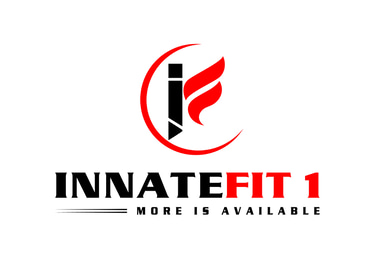Visit Innatefit1.com for exercise wear and equipment!!!
A Comprehensive Guide to Achieving Your Healthiest Year: Ten Evidence-Based Strategies
Discover ten proven strategies to make this your healthiest year yet. This comprehensive guide offers evidence-based tips to improve your well-being and sustain lasting health.
SELF-HELPHEALTHY LIFESTYLEPERSONAL DEVELOPMENTHEALTH
Joseph Battle
11/14/20259 min read


Introduction:
The commencement of a new year often inspires a widespread commitment to personal health improvement. Statistically, a significant portion of the population initiates these plans with genuine intent, yet a considerable percentage fails to execute them.
The primary catalyst for this high rate of attrition is not a lack of willpower, but rather the construction of health plans that are inherently unsustainable due to their complexity and rigidity. The pursuit of health, contrary to popular belief, need not be an arduous undertaking.
The central challenge lies in the overwhelming volume of conflicting information disseminated by the global wellness industry, an economic sector valued at approximately $639 billion annually.
A critical understanding is that a substantial proportion of this information originates from corporations whose primary objective is revenue generation through product sales, rather than the genuine facilitation of individual health outcomes.
Fortunately, empirical scientific research consistently demonstrates that health improvement is an accessible goal, irrespective of one's current starting point. Numerous methods for enhancing well-being are remarkably straightforward, requiring minimal financial investment and avoiding feelings of deprivation. The integration of the following ten strategic tips into one's daily routine can serve as a foundational framework for experiencing a substantively healthier year.
The Foundational Role of Sleep Quality and Duration
Adequate rest serves as the cornerstone of all health-related endeavors. Insufficient sleep directly impairs cognitive function, emotional regulation, and physical energy levels, thereby undermining the capacity to make positive choices and maintain goal-oriented behaviors. The scientific consensus, as endorsed by organizations such as the National Sleep Foundation, recommends that adults get between 7 and 9 hours of high-quality sleep per night. Consistency is paramount; achieving this duration at least eighty percent of the time is a critical target for tangible benefits.
Optimizing sleep is a multifaceted process that involves both environmental and behavioral adjustments. The sleeping environment itself should be engineered exclusively for rest and recuperation. This necessitates removing activities such as television viewing, tablet or smartphone use, reading, or work-related tasks from the bedroom. The objective is to condition the brain to associate the bedroom environment solely with sleep, thereby strengthening the circadian rhythm.
Investing in a comfortable, supportive bedroom set within one's financial means contributes significantly to physical comfort. Furthermore, the room should be maintained as dark, cool, clean, and uncluttered to create a serene atmosphere conducive to sleep.
Establishing a consistent sleep-wake cycle is equally critical. This involves ritualizing a bedtime routine and aiming to retire for the night and awaken in the morning at approximately the same time each day, including weekends. While this adjustment may present initial challenges, the body's internal clock, or circadian rhythm, will gradually adapt, leading to natural feelings of drowsiness at the designated bedtime and alertness upon waking.
Principles of Hydration and Nutritional Balance
Hydration and nutrition represent two of the most fundamental pillars of physiological health. Data indicates that an estimated seventy-five percent of the population exists in a state of chronic under-hydration, a precursor to more severe dehydration. The most effective way to maintain optimal hydration is to consciously consume at least 8 eight-ounce glasses of fresh, filtered water daily. This intake is in addition to fluids from food and other beverages, such as coffee or tea.
Concurrently, the prevalence of overweight and obesity, particularly in the United States, where it affects over seventy percent of adults, underscores a global nutritional challenge. The concept of "eating right" is often overcomplicated; while it is influenced by individual genetics, pre-existing health conditions, and personal preferences, the core principles are accessible. The initial step is to determine an appropriate daily caloric intake based on age, sex, weight, height, and activity level. The objective is to consume this caloric amount—or a modest deficit for weight loss—primarily from nutrient-dense foods.
Adherence to a rigid dietary plan is not a necessity for success. A more sustainable approach is the "80/20" principle, which involves making health-conscious food choices approximately 80% of the time, allowing for flexibility in the remaining 20%. This model mitigates the all-or-nothing mentality that often leads to abandoning health goals after a single lapse. For individuals who benefit from structure, strict planning is a viable option; the key is to cultivate resilience and promptly return to the plan after any deviations.
To effectively manage hydration and nutrition, self-monitoring is a powerful tool. A plethora of digital applications, such as MyFitnessPal, exist to track caloric intake, water consumption, and physical activity. Other applications cater to specific dietary needs, such as low-cholesterol or low-sodium plans, providing personalized data to inform better daily choices.
Cultivating a Supportive Social Environment
The quality of one's interpersonal relationships profoundly influences overall well-being. Involvement in toxic relationships, or associations with individuals who are unsupportive or actively detrimental to one's goals, can generate significant psychological stress.
It is imperative to periodically evaluate these relationships and consciously distance oneself from people who provoke feelings of insecurity, inadequacy, or chronic negativity. Every individual deserves a social environment characterized by respect and support.
It is crucial to recognize the boundaries of personal control; one cannot dictate the actions or thoughts of others. The focus, therefore, must be on one's own conduct—striving to be a supportive friend, a compassionate partner, and a principled individual according to one's own value system.
Diversity of thought and belief is not only acceptable but should be celebrated; however, disagreement never justifies disrespectful or poor treatment. Allocating time and emotional energy to relationships that foster feelings of love, happiness, and contentment is a direct investment in mental and emotional health.
The Critical Importance of Preventive Healthcare
Proactive health maintenance is a far more effective strategy than reactive treatment. Oral health, in particular, is intimately connected to systemic health. For instance, periodontitis (severe gum disease) has been scientifically linked to an increased risk of cardiovascular disease, stroke, and diabetic complications.
The practice of proper daily oral hygiene—brushing twice daily and flossing at least once—is a simple yet powerful intervention for preserving long-term health.
Regardless of insurance status, scheduling annual check-ups with both a primary care physician and a dentist is a non-negotiable component of responsible self-care. An annual physical examination allows screening and early detection of underlying health issues that may be asymptomatic, enabling preventive measures or early treatment. Similarly, routine dental cleanings and examinations are essential for identifying problems such as cavities, gum disease, and oral cancers in their earliest, most treatable stages.
A Realistic and Accessible Approach to Physical Activity
Historical exercise recommendations often promoted lengthy, intense workout regimens, creating a barrier for many. Contemporary research, including guidelines from the American Heart Association, has refined this understanding. For substantial health benefits, the current recommendation is at least 150 minutes (2.5 hours) of moderate-intensity aerobic activity per week. This can include activities such as brisk walking, social dancing, gardening, doubles tennis, or leisurely bicycling.
For those with time constraints, this requirement can be met through 75 minutes of vigorous-intensity aerobic activity spread throughout the week. Examples include running, swimming laps, aerobic dancing, hiking uphill, or jumping rope. Beyond dedicated exercise sessions, Non-Exercise Activity Thermogenesis (NEAT)—the energy expended for everything other than sleeping, eating, or sports—plays a significant role.
This includes calories burned through household chores, preparing meals, playing with family, walking a dog, taking the stairs, or parking farther from a destination. For goals extending beyond basic health maintenance, such as muscle building or enhanced endurance, additional targeted exercise is beneficial. However, the core message is that maintaining fundamental health requires a manageable and less intimidating time commitment.
The Practice of Mindfulness and Gratitude
Cultivating mindfulness and a conscious attitude of gratitude are powerful practices for enhancing mental and emotional well-being. A content and positive mental state naturally correlates with healthier lifestyle choices. Furthermore, the ability to recognize and appreciate one's blessings builds psychological resilience, enabling individuals to navigate difficult periods with greater equanimity.
The practice of mindfulness involves deliberately focusing on the present moment, free from distractions. This can be implemented by engaging fully in a single activity: watching a movie without using a phone, writing in a quiet environment rather than with loud music, or experiencing emotions directly rather than numbing them.
During activities, one can actively note sensory details—the scent of the air, the sound of a loved one's laughter, the tactile sensation of typing. The common belief in multitasking is a misconception; neurocognitive science shows that the human brain rapidly toggles between tasks rather than processing them simultaneously, reducing efficiency and increasing stress.
To formalize this practice, dedicating time each evening to meditation or maintaining a gratitude journal can be highly effective. Consistent practice strengthens the neural pathways associated with focus and present-moment awareness, making it easier to maintain composure even in chaotic circumstances.
Establishing Sound Financial Management Practices
Financial stress is a well-documented contributor to poor mental and physical health. While effective budgeting cannot compensate for a fundamentally low income, financial awareness is a critical skill. Understanding one's current financial position and defining future goals are the first steps toward developing a viable strategy for improvement.
A significant barrier is the general lack of accessible financial education. Many individuals lack a foundational understanding of monetary principles, career earning potentials, or the realistic costs associated with their desired lifestyle. The digital age has democratized access to this knowledge; platforms like YouTube offer countless free resources on topics ranging from basic budgeting and debt management to investment strategies.
The core of personal finance is straightforward: track all income and expenses, and establish a realistic plan for savings and future security. This includes paying bills on time, building an emergency fund, and gaining a basic understanding of financial instruments. For those seeking structure, proven budgeting methods exist.
The 50/30/20 rule (allocating 50% of income to needs, 30% to wants, and 20% to savings/debt repayment) is effective for those with median or higher incomes. For individuals with more constrained finances, zero-based budgeting, where every dollar of income is assigned a specific purpose, can provide greater control. Tools like MIT’s or Canada’s Living Wage Calculator can offer a valuable perspective on one's economic standing relative to local costs of living.
Prioritizing Mental and Emotional Well-being
Mental health is inextricably linked to physical health; conditions like chronic depression and anxiety are known risk factors for physical ailments, including heart disease and stroke. Furthermore, untreated mental health challenges often lead to neglect of physical self-care, creating a downward spiral of deteriorating well-being.
Mental health issues are far more prevalent than commonly perceived, with many individuals carrying unaddressed trauma that can cause measurable physiological changes in the brain's structure and function. These changes can impair judgment and decision-making capacities. Engaging with a mental health professional can be beneficial for a wide spectrum of people, not only those with diagnosed conditions.
The advent of telehealth has dramatically increased accessibility to therapy through services like BetterHelp, which provide licensed counseling remotely. Acknowledging past or present trauma and seeking professional support is a proactive and courageous step toward thriving.
The Therapeutic Benefits of Nature and Laughter
Modern, indoor-centric lifestyles often result in a deficiency of both sunlight and fresh air, leading to suboptimal Vitamin D levels and exposure to stale, recycled indoor air. To counter this, scheduling at least 15 minutes of daily outdoor time is a vital practice for holistic health. Sunlight exposure is necessary for the body's synthesis of Vitamin D, and fresh air improves respiratory well-being.
To enhance this practice, coupling outdoor time with activities that induce laughter is profoundly beneficial. Laughter functions as a natural stress reliever and has demonstrated physical benefits, including engaging core muscles, reducing anxiety, improving cardiovascular function, and aiding in maintaining a healthy weight.
Whether through social interaction, comedy, or playful activity, integrating more laughter into one's life is a simple and enjoyable health strategy.
Managing and Eliminating Substance Dependencies
Dependence on non-essential substances can have deleterious effects on both mental and physical health, leading to personality changes, cognitive impairment, and organ damage. A critical review of common dependencies is warranted:
Nicotine/Tobacco: As a leading cause of preventable death worldwide, smoking is conclusively linked to cancer, cardiovascular disease, and chronic obstructive pulmonary disease (COPD). There is no safe level of consumption; complete elimination is the only healthy choice.
Caffeine: While habit-forming, moderate consumption (typically one serving per day) is generally considered acceptable for most adults. However, if consumption leads to symptoms like tremors, heart palpitations, or an inability to function without it, complete cessation is advisable.
Alcohol: Health guidelines generally recommend limiting alcohol intake to no more than one drink per day for women and two for men, though emerging research suggests that lower limits are preferable. For many, consuming no more than three alcoholic beverages per week is an ideal target. Those who regularly exceed seven drinks per week should seriously consider reduction or abstinence.
Sugar: Processed added sugars provide energy but have no nutritional value. A Harvard study suggests that limiting daily added sugar intake to less than 24 grams is acceptable. Excessive consumption is a direct contributor to obesity, type 2 diabetes, and heart disease. Focusing on whole foods and satisfying sweet cravings with natural sources like fruit or honey is a significantly healthier approach.
This principle extends to other drugs, whether prescription, over-the-counter, or illicit. A thorough evaluation of any substance that offers minimal or no health benefit is essential. The goal is to eliminate non-beneficial drugs and minimize the use of those with only marginal benefits.
In conclusion, the journey to improved health is a progressive and individualized process. The ten strategies outlined above provide a comprehensive, evidence-based framework for meaningful change.
The most effective approach is not to attempt all changes simultaneously, but to select the single most impactful area for improvement and focus on integrating it until it becomes an automatic habit. Once that foundation is solidified, another strategy can be adopted. Through this methodical and compassionate process, a healthier, more rewarding life is eminently achievable.










